INTRODUCTION

Although it's no secret that most entry/mid-level NAS (network attached storage) devices/servers are unable to compete in terms of read and write performance with "regular" external drives things change a lot when we move up the ladder and so high-end models can easily match and, in many cases, even surpass such performance levels. We are of course talking about NAS models with either 10GbE (10 Gigabit) or TB3 (Thunderbolt 3) connectivity which allow them to climb up to rather impressive read and write numbers of up to 1000MB/s and 2000MB/s respectively aimed towards heavy workloads regardless of market. There are always ultra-high end technologies such as 25/40/56/100G getting developed and released as we speak but it will be many years before (and if) we see rather affordable options based on those. QSAN may not be the oldest or most popular player in the NAS market but they've released quite a few impressive models and today with us we have the top one in their XCubeNAS line the XN8008T.
QSAN Technology, a leading storage technology designer and manufacturer, was founded in July 2004. Building on our vast experience in the industry, QSAN strives to build enterprise-class storage systems that pride ourselves with outstanding performance, secure data protection, and comprehensive data management. QSAN endeavors to provide the industry with high-quality data storage systems that are simple, secure, scalable and reliable. For more information, please visit www.QSAN.com.
Since the XN8008T is the flagship model in the QSAN XCubeNAS line it only makes sense that it should have high-end specifications and it does starting with a 7th generation Intel Core i5-7500T quad-core processor running at 2.7GHz with a maximum Turbo speed of 3.3GHz and a total of nine 2.5/3.5" bays (can be configured in single/RAID 0/RAID 1/RAID 5/RAID 5 + hot spare/RAID 6/RAID 10/RAID 50/RAID 60/JBOD) with support for up to 114TB of storage (currently at least). Worth pointing out is that 8 out of the 9 available SATA III 6Gb/s bays of the XN8008T feature external lockable drive trays while the last one is located inside a hidden compartment (QSAN refers to it as service door). The base model also comes ready with a single 8GB DDR4-2400 SODIMM module but our sample arrived with 16GB (expandable to 32GB) and a Thunderbolt 3 card (XN-TB302) which was pre-installed into the units single PCIe Gen3x8 expansion slot (also supports 10GbE cards). In terms of connectivity the XN8008T comes ready with 5 USB 3.0 ports, HDMI output (currently only for service/debug purposes) and four Gigabit Ethernet RJ45 ports. Under the hood of the XN8008T we also find an 8GB USB DOM (flash memory) and an 200W FLEX ATX power supply unit. Last but not least just like the XN5008T which we reviewed a while back (review here) the XN8008T also uses on a custom Linux kernel (QSAN Storage Management 3.0) to run a 128-bit ZFS file system.
SPECIFICATIONS AND FEATURES

PACKAGING AND CONTENTS
Exactly like the XN5008T the XN8008T also arrived inside a medium sized cardboard box that has a partial product drawing at the front along with a sticker with the main product specifications.
Some of the possible uses for the XN8008T are printed on the left side of the box.
The drawing located at the front expands all the way to the right side.
A welcome note is the first thing you will see once you open the box.
As usual the NAS is wrapped inside a plastic bag and placed between two foam spacers while the bundle is placed inside a small cardboard box.
Contained in the small cardboard box are the power cord, two RJ45 Ethernet cables, multi-function plastic key, bag with 2.5" mounting screws, user manual, XReplicator (backup software) license key and a small plastic key (the PCIe shield was left over when QSAN mounted the TB3 card in our sample).
THE XCUBENAS XN8008T
Measuring 310mm in length, 235mm in width and 177mm in height the XCubeNAS XN8008T is identical to the XN5008T model.

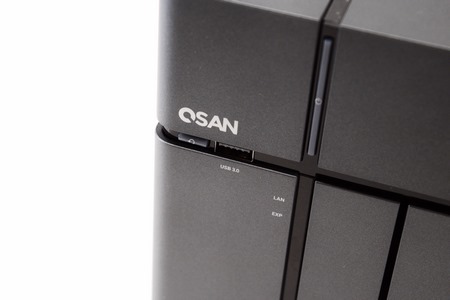

At the front we see the illuminated (activity LEDs) power on/off and USB copy buttons, USB 3.0 port and 8 drive bays with individual activity LEDs (blue) over each one.

 Each drive tray features a lock which can be used with the bundled plastic key.
Each drive tray features a lock which can be used with the bundled plastic key.
All trays are made out of hard plastic and feature tool-less mechanisms for 3.5" drives (2.5" ones require screws).
Once again in order to access the RAM and the 2.5" tray you will need to remove the service door and to do that you will need to push this tiny button located on the left side of the enclosure (you can use the bundled key for that as well).
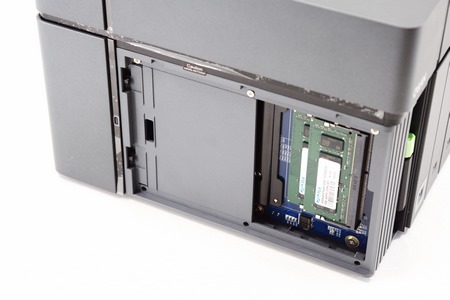
 Here we find the two DDR4 SO-DIMM slots (taken by two 8GB modules clocked at 2400MHz in our sample) and a 2.5" drive tray (SSD caching).
Here we find the two DDR4 SO-DIMM slots (taken by two 8GB modules clocked at 2400MHz in our sample) and a 2.5" drive tray (SSD caching).
Unlike the large 3.5" trays this is not what I’d call sturdy but it gets the job done.



Moving at the rear we find the AC power port, two 120mm exhaust fans, Thunderbolt 3 card (sold extra), HDMI port, 4 RJ45 Gigabit Ethernet Ports, 4 USB 3.0 ports, Kensington lock and a reset button.
The entire enclosure sits on six round rubber feet.
In terms of storage for this review we equipped the XN8008T with 8 Seagate IronWolf 12TB SATA III HDDs and a single Kingston 480GB SSD.
For our tests we also used two X540-AT2 cards (10GbE) and the GC-ALPINE-RIDGE V2.0 TB3 card by GIGABYTE (plugged into our new test rig - GIGABYTE X299 AORUS GAMING 9 / INTEL CORE I9-7980XE / CORSAIR MP510 960GB / CRUCIAL BALLISTIX ELITE 64GB DDR4-3200).
Although we performed most of our tests with an AKITIO TB3 cable (40Gbps) QSAN also provided us with their very own later on (also 40Gbps - sold extra).
SETUP


To setup any QSAN NAS you will need to download the XFinder software from their website which in turn will look for any QSAN NAS models on your local network.
Once you click on the NAS you will launch the setup wizard which has two options quick setup and customized setup (as always we chose the latter - notice how the installed drives are shown as blue in the above picture).
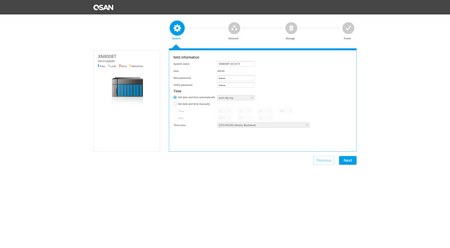

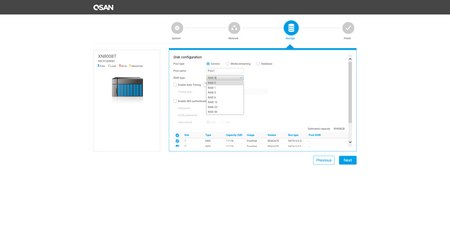
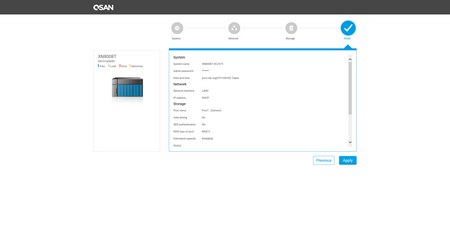
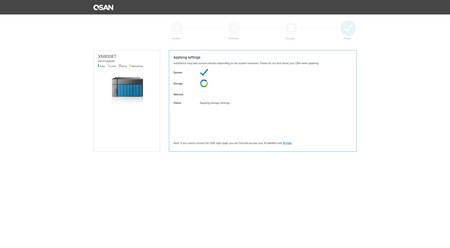 As with other NAS models you will need to enter a password, set the time and date, configure the network settings and choose the desired mode for the installed drives.
As with other NAS models you will need to enter a password, set the time and date, configure the network settings and choose the desired mode for the installed drives.

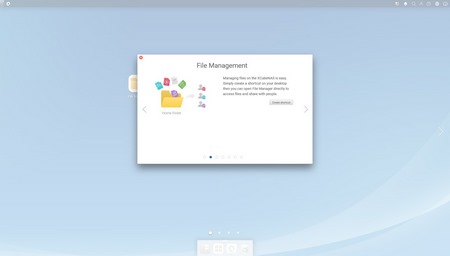

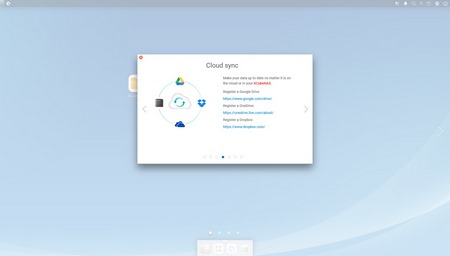

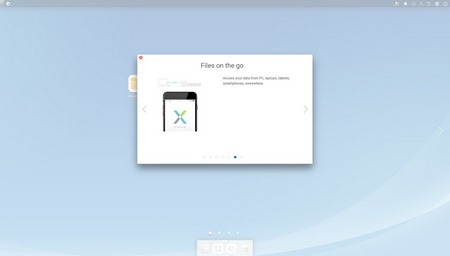

After the initial setup is over you will still need to set a shared folder (and the desired capacity for that folder), choose if you want to create a file manager shortcut on your desktop, download and install the XReplicator app (more on that later on), register a Cloud service for the sync app, enable/disable the media library feature and finally you can either create a QSAN ID or login if you already have one.
QSM 3.1.3 PART 1
The main screen of the QSAN Storage Management (QSM) looks very similar to what we see from other manufacturers like QNAP and ASUSTOR.
You can access a rather basic system monitor from the top right corner while the system basic commands can be accessed from the top left corner.
Just like with every other NAS in the market the control panel is the cornerstone of the QSM.
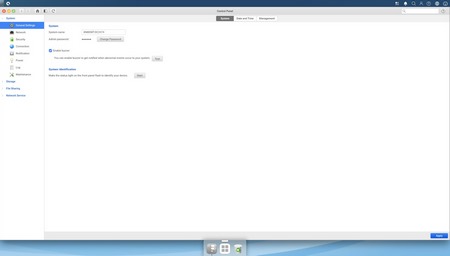

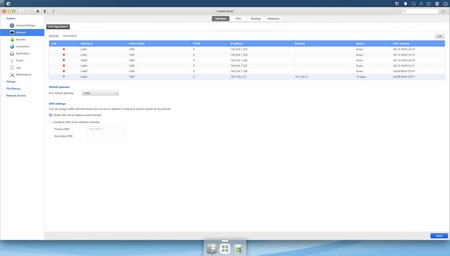

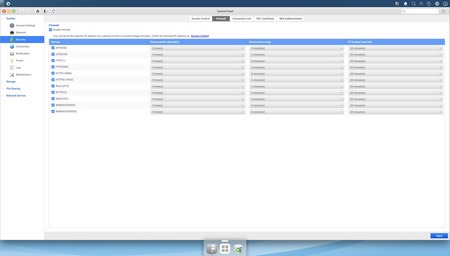

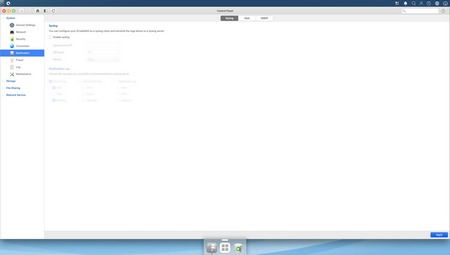
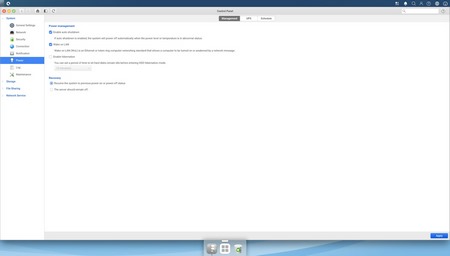


From within the system tab you can change the password, adjust the time/date, enable auto logout (after X minutes) and login lock (single login), check the various interfaces (keep in mind that TB3 acts like Ethernet so you may need to set it up manually), enable link aggregation, create static routes, use ping and trace route, adjust access control and firewall, use an SSL certificate, enable SED authentication (requires a compatible drive), enable the DDNS and UPNP services, configure notifications, adjust the power settings (like auto shutdown, hibernation and WOL), access the status of the UPS (if you have one attached to the NAS), check available logs, perform firmware updates and system recovery and finally you can import/export all of your NAS settings.
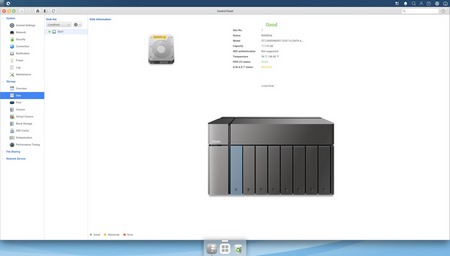
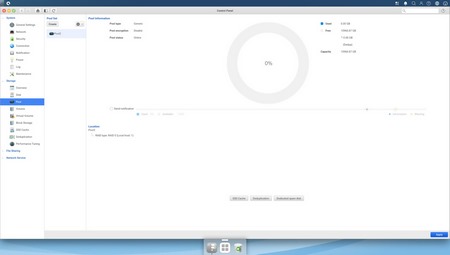


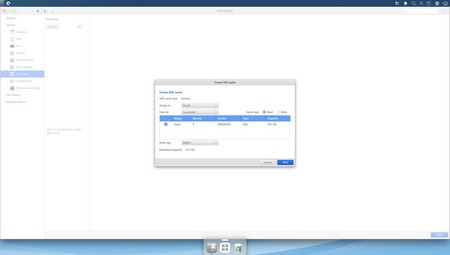
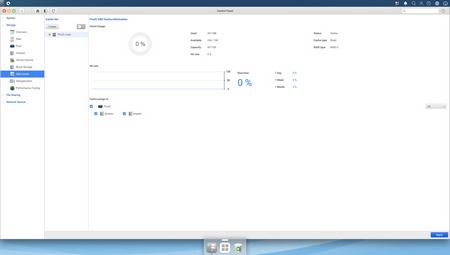

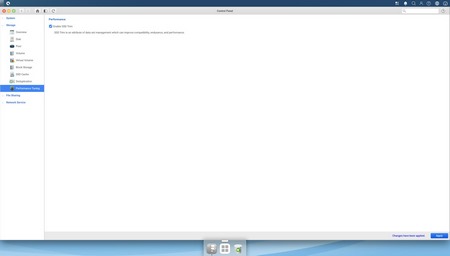
As expected, everything related to drives including volumes (remote volumes as well), drive information, storage pools, SSD caching and SSD Trim is placed under the Storage tab (we've included a picture of the SSD caching page after we concluded all our single disk 10GbE tests).
QSM 3.1.3 PART 2
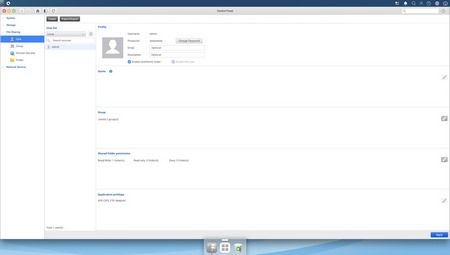

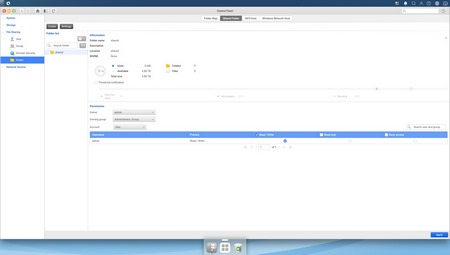
Under the file sharing tab, you can add/remove users, create groups, enable domain security and of course create and delete shared folders.
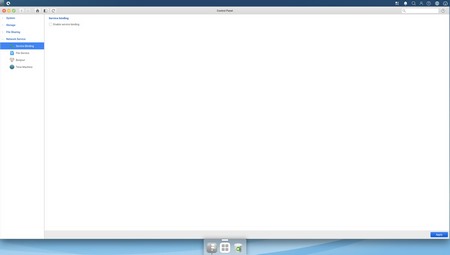
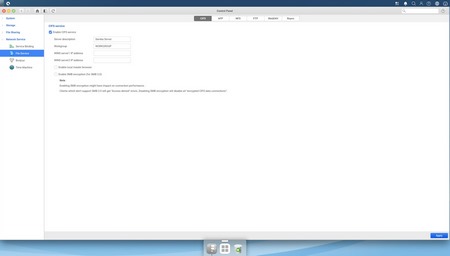
The network service tab includes settings related to service binding, CIFS, AFP, NFS, FTP, WebDAV, Rsync, Bonjour and Time Machine.
The file manager allows you to browse through all the files in the NAS, create/remove directories, copy files and much more.
Inside the backup app you will find several ways to back up your sensitive data locally, remotely and on the cloud.
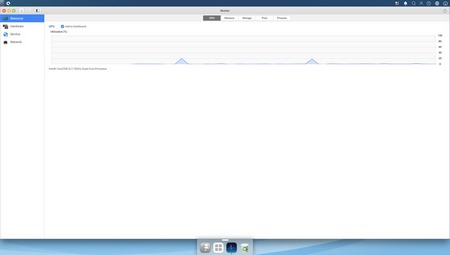

Hardware information and running services can all be accessed from the Monitor app.
You can also sync everything loaded in your NAS with a cloud service (so far Google Drive, Microsoft OneDrive and DropBox.
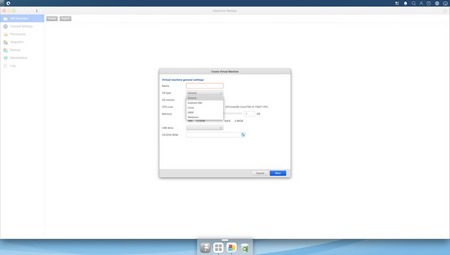

The Hypervisor Manager is QSAN's virtualization app so from here you can load Linux, UNIX, Windows and Android OS images (you can also set the desired available memory and cores to be used with this image).
From the media library management, you can rebuild the entire database of your media files.
As expected, you are also able to setup your very own virtual private network (VPN).
The available Antivirus app should be able to keep your NAS safe and at least in our sample it didn’t slow-down all other processes.
The MariaDB SQL database is also supported by the XN8008T.
Finally the XN8008T can also be used for web hosting.
XREPLICATOR
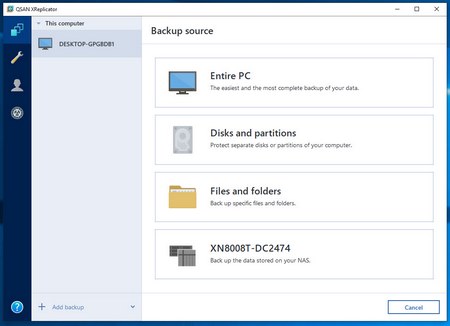

QSAN also offers a key for their XReplicator software (software by Acronis) which allows you to backup your entire system, disks, partitions and/or folders (or the contents of your QSAN NAS) to a QSAN NAS.


You will of course need to input the user name and password of that said NAS along with a destination folder in order to complete the procedure.
By using TB3 and/or 10GbE the entire backup procedure takes just a few minutes to complete (depends on the amount of data however).
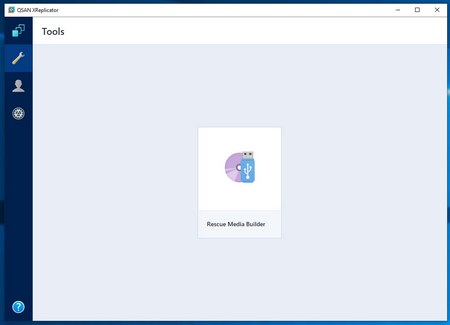
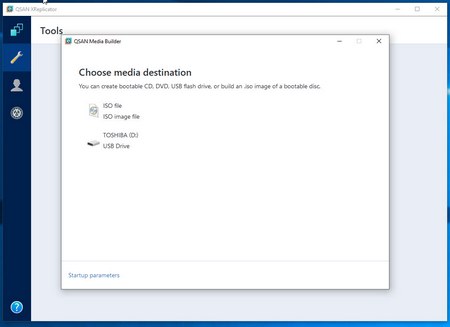
The XReplicator can also be used to create a rescue media either to a drive or an ISO file.
TESTING METHODOLOGY
Originally, we had decided that since some of the NAS servers/devices we've tested in the past are no longer in our possession (naturally) we would keep performing the exact same testing methodology we did in the past for as long as possible in order to provide accurate comparison results. However, since our real-life tests are not enough for some people, we also decided to throw in ATTO V2.47 and Crystal Disk Mark V3.0.4 to cover the more demanding users. However as always we will be using a single Seagate Constellation ES.3 4TB SATA III and up to 10 Seagate IronWolf 12TB SATA III hard disk drives with 3.5” compatible units (we switched to 12TB models for RAID tests since August 2018 – due to high workloads the performance of previous drives had started to deteriorate) and up to two (for now) Enterprise Capacity 2.5 HDD V3 2TB SATA III HDDs with 2.5” compatible units to perform several upload/download tests with 10.9GB (Single) and 40,8GB (RAID) files. Tests are repeated a total of 4 times after which we record the average numbers (from the 4 peak ones) into our charts. The network device used for 1GbE tests is the same Netgear D7800 VDSL Modem/Router we’ve been using lately when performing tests on NAS servers.
* Since the 25th of June 2015 for 10GbE tests we’ll be using a Netgear ProSafe XS712T 10G Smart Switch and an Intel XT540-AT2 10GbE PCIe card (10GbE compatible NAS cards will be provided from each company and stated in each review).
** Since the 9th of May 2019 we also introduced TB3 (Thunderbolt 3) tests using our latest test rig (GIGABYTE X299 AORUS GAMING 9 / INTEL CORE I9-7980XE / CORSAIR MP510 960GB / CRUCIAL BALLISTIX ELITE 64GB DDR4-3200 / GIGABYTE GC-ALPINE RIDGE V2.0). For TB3 tests we'll be using ATTO V4.00.0F2, Crystal Disk Mark V6.0.2 and Passmark Performance Test V9.
TEST RESULTS – 1GBE
SINGLE



RAID



TEST RESULTS – 10GBE
SINGLE
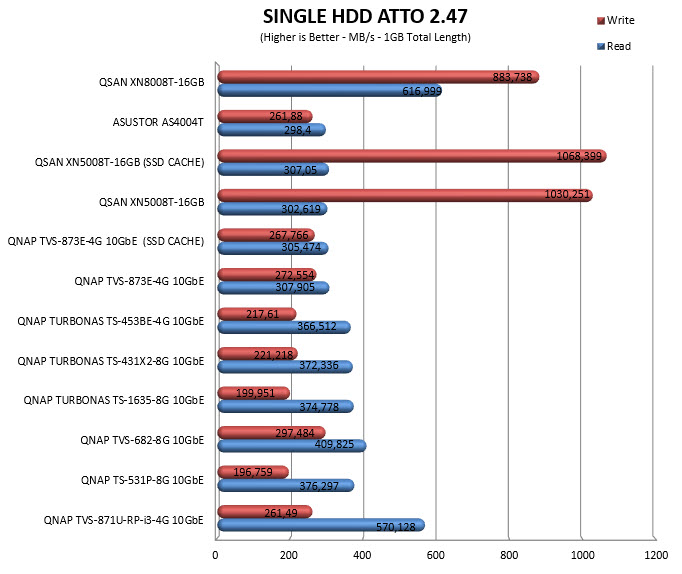

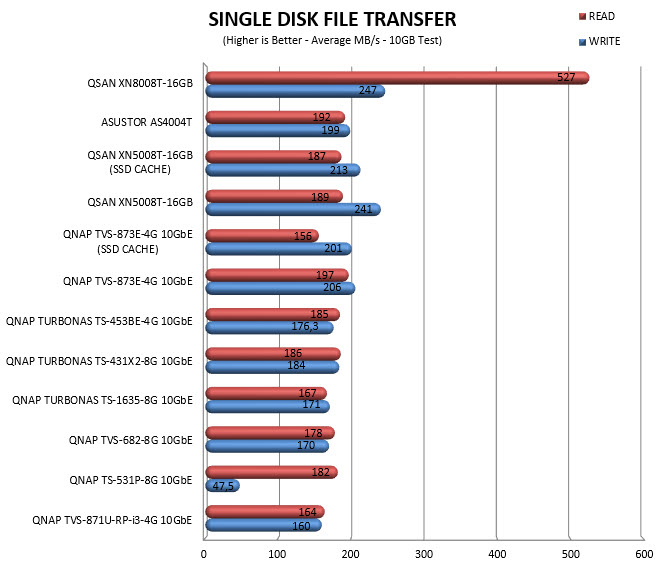
RAID

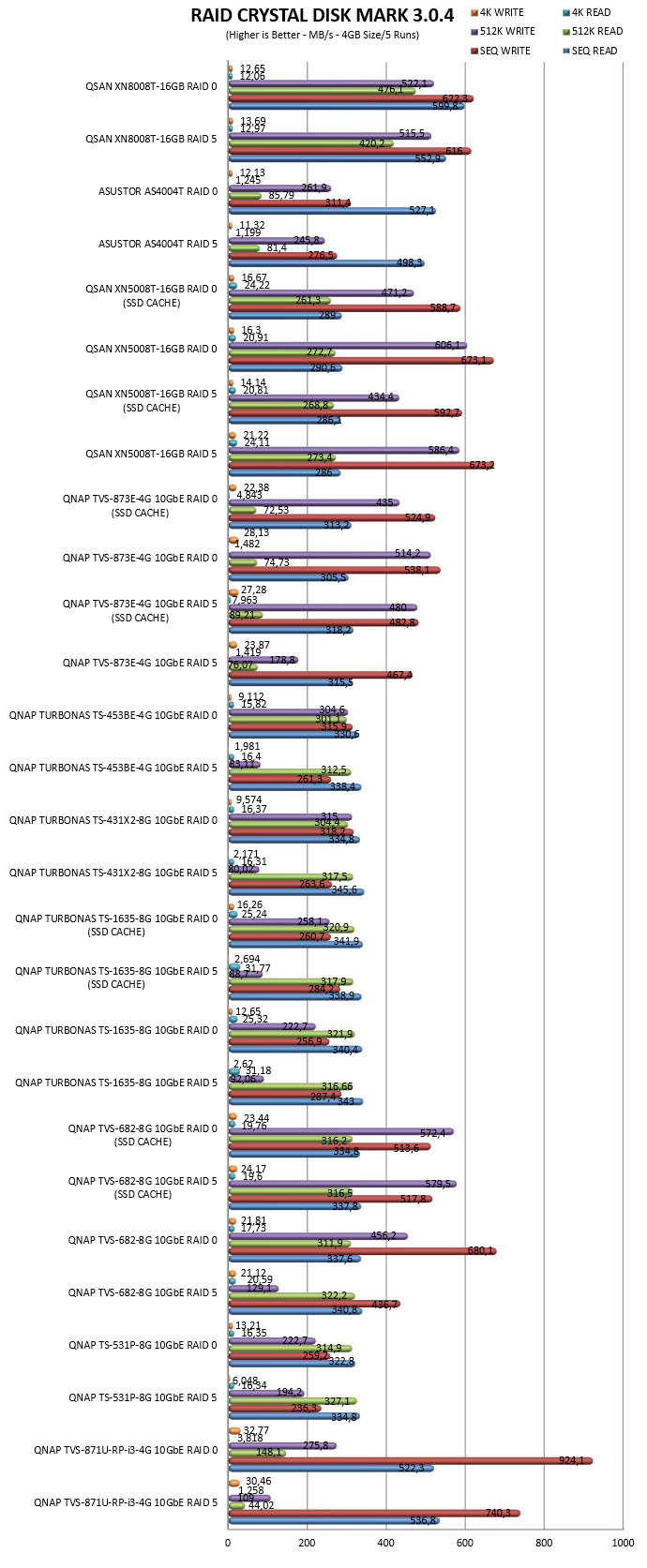

TEST RESULTS - THUNDERBOLT 3
SINGLE
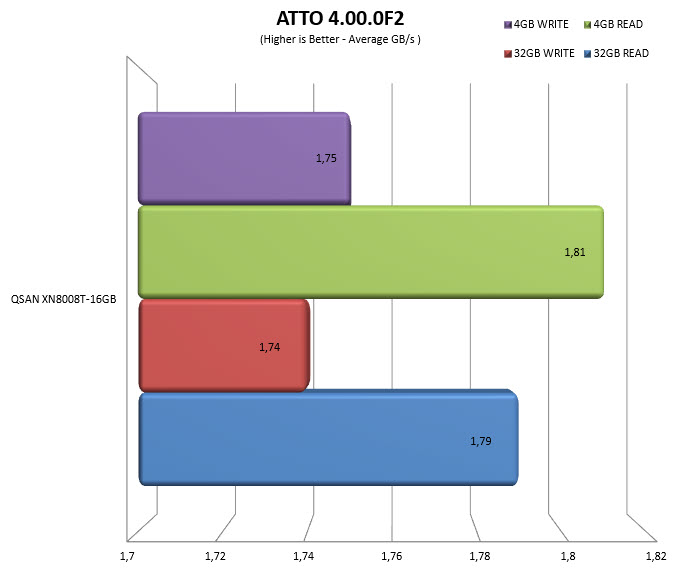
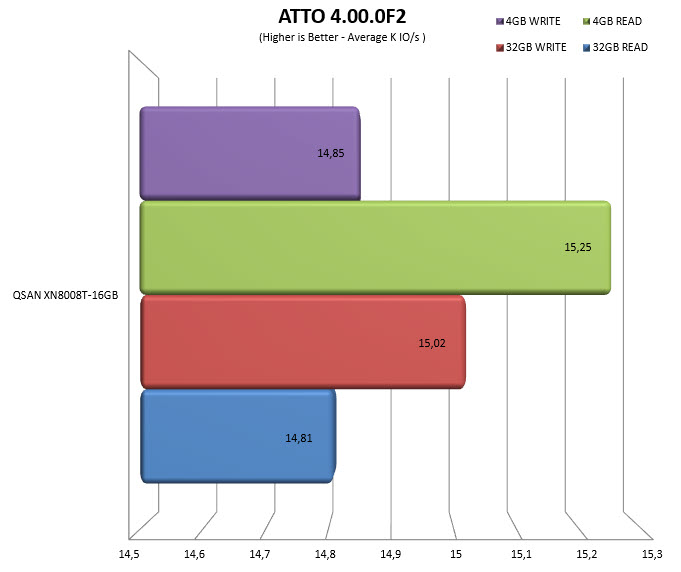


RAID




TEST RESULTS – TEMPERATURES / CONSUMPTION / NOISE



CONCLUSION
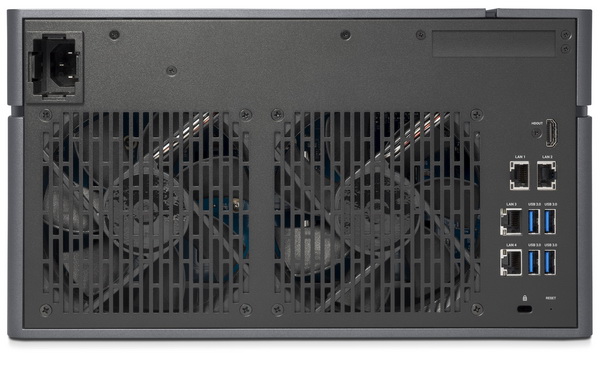
Thanks to its rather impressive hardware specifications (Intel Core i5-7500T/ 16GB DDR4-3200/ Thunderbolt 3) our sample of the XCubeNAS XN8008T had no problems climbing on top of our performance charts so if you’re looking for a blazing fast centralized storage/file server for your PC or MAC or even your local network (via a 10GbE card of course) then QSAN has you covered. In terms of design the entire XCubeNAS line won the Good Design Award a while back so there’s not much to ask here either. Power consumption and noise levels are also pretty much on par with what we’ve seen in the past by similar models (although our power consumption results seem a bit too low, we will double check with QSAN just in case - as we had thought the i5 used in the XN8008T is far less power hungry than the Celeron used in the XN5008T) but what stands out is build quality and that’s a very important aspect for SMB targeted models. That being said although the XCubeNAS XN8008T offers everything we’d want from a “pure” NAS (just like the XN5008T) the lack of available apps is without doubt a serious issue for many people and although QSAN clearly aims their XCubeNAS line towards small and large businesses it’s really strange that they’ve yet to release more applications aimed primarily towards demanding home users (with functions like a torrent client, media server, media player and more).
Back when we reviewed the XN5008T availability was a rather serious issue as well for QSAN, today however things have improved even if just by a little (enough however to slightly lower prices). So currently the “basic” version of the XN8008T (8GB DDR4-3200 RAM instead of 16GB and without the TB3 card) can be found in the USA for USD2450 (Amazon.com) and for 1730Euros inside the EU (Amazon.de). Of course in order for you to get the package we tested today (XN8008T with 16GB RAM, XN-TB302 TB3 Card and TB3 Cable) you will need to spend around USD2900/2050Euros (excluding of course the cost of a TB3 compatible system) and unfortunately that’s hardly a price which we can justify for that you’re getting in return (if QSAN builds a rich app selection perhaps). Prices are certain to drop even further as QSAN continues to further expand their distribution network but at least for now we expect this to be a serious issue (even for businesses). Still thanks to its impressive 10GbE/TB3 performance, available settings, OS stability and looks the XN8008T is definitely worth our Golden Award.

PROS
- Build Quality
- Quad Core Intel i5 7500T CPU
- Top of the Charts Performance
- 8GB DDR4-3200 RAM (Expandable To 32GB / 16GB In Our Sample)
- 4 RJ45 Gigabit Ethernet Ports (Link Aggregation Supported)
- Gen3x8 PCIe Slot (10/40GbE/Thunderbolt 3.0 Ready)
- 9 Drive Bays (8x3.5”/1x2.5”)
- 5 USB 3.0 Ports
- HDMI Output (Service Menu)
- Power Consumption
- XReplicator Software
- RAID 0/1/5/6/10/50/60/JBOD + Hot Spare Support
- QSM 3.1 OS
- Design (Good Design Award)
CONS
- Price (For Some)
- Limited Apps (Both NAS And Mobile)
- Global Availability (Currently)

 O-Sense
O-Sense





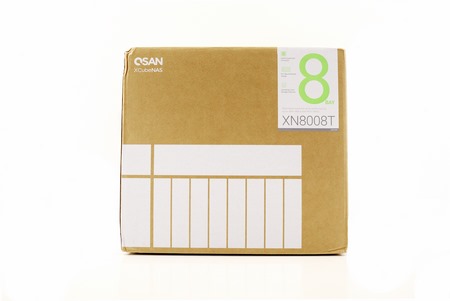








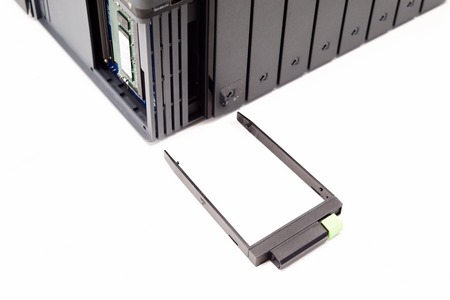
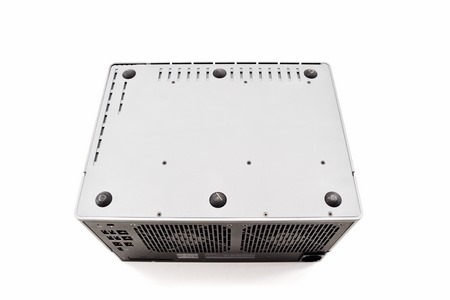
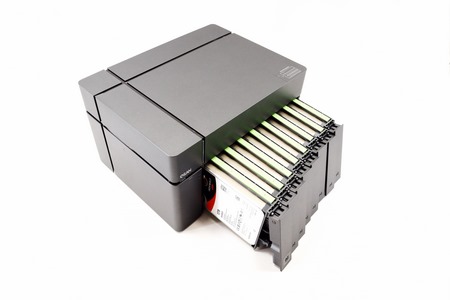

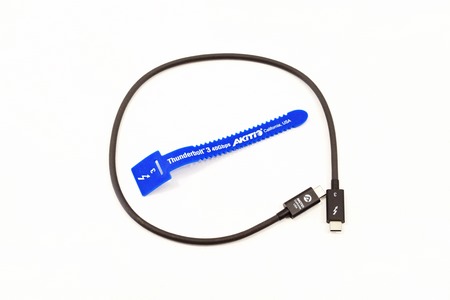
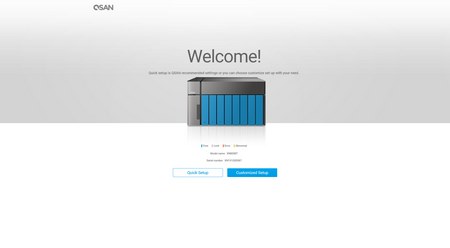

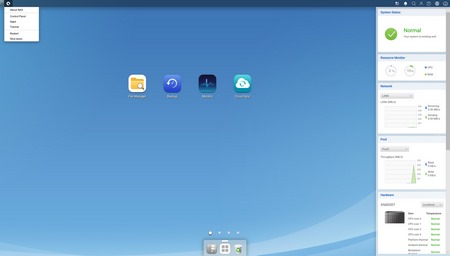
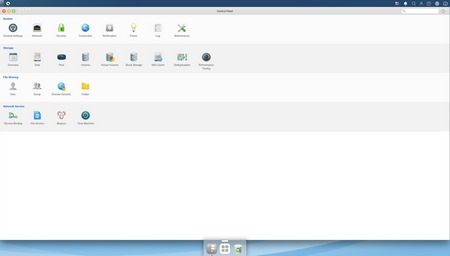




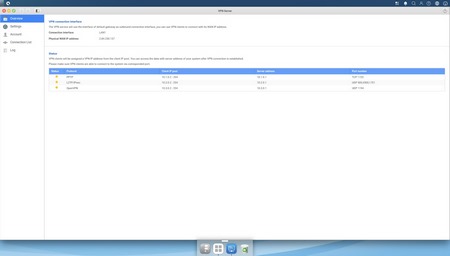
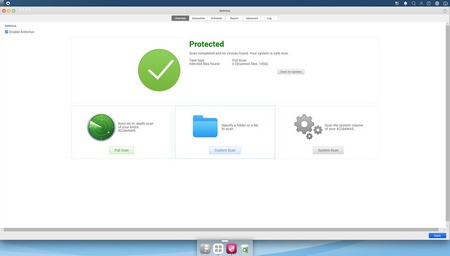


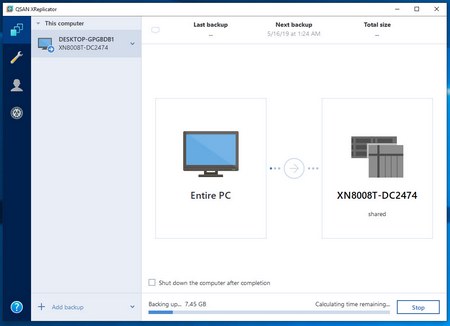


.png)

